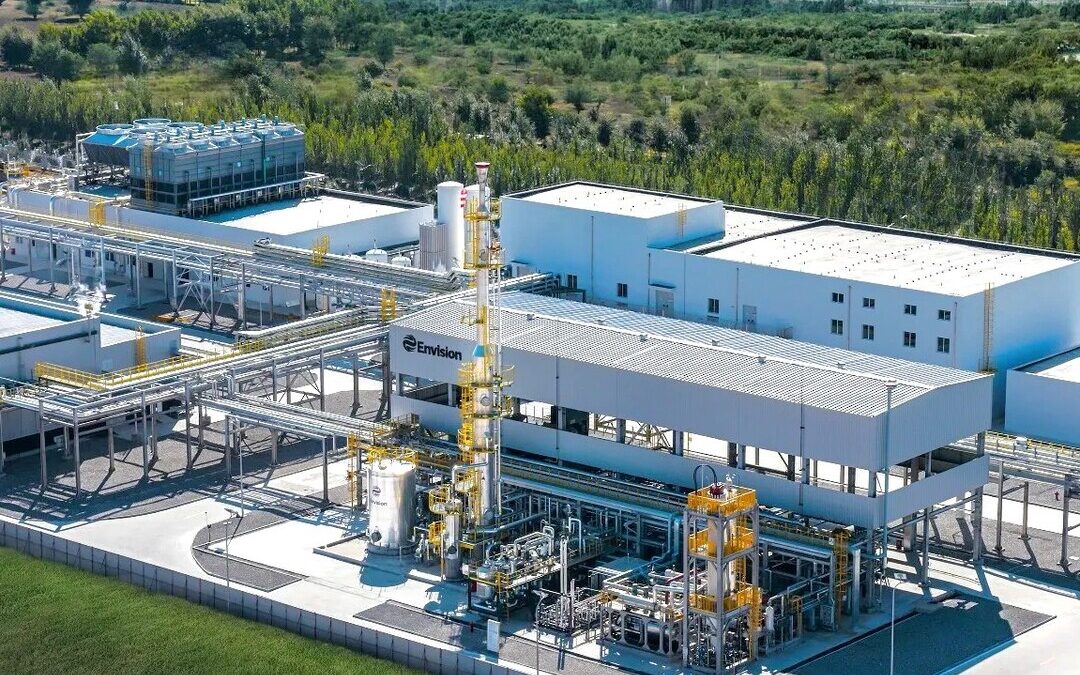Global Hydrogen Investment Surges to $110B as 1st Wave of Projects Come Online
Clean hydrogen projects gain momentum as $110 billion investment drives global capacity growth, Hydrogen Council report shows
Global investment in clean hydrogen has climbed above $110 billion, supporting more than 500 projects under construction or already operational, according to the Brussels-based Hydrogen Council, a global CEO-led initiative made up of top energy, auto and industrial companies.
The surge represents a $35 billion increase in just 12 months and reflects average growth of more than 50 percent annually since 2020, reported the council’s inaugural “Global Hydrogen Compass 2025” report, produced with McKinsey & Co.
The projects represent over 6 million tonnes of clean hydrogen capacity per year, with about 1 million tonnes already online.
“Committed investment has grown tenfold since 2020 despite a challenging environment for energy transition technologies,” the report said.
Consolidation Brings Resilience
The report noted the industry is undergoing a natural “pipeline clean-up,” with commercially weaker projects falling away.
More than 1,700 projects have been announced globally since 2020, but at least 50 have been canceled in the last 18 months, most of them early-stage renewable hydrogen ventures.
Executives said this process mirrors the path of solar and wind power, where early hype gave way to more resilient development cycles.
“Realism, pragmatism and focus will be key to success in the next phase of hydrogen build-out,” said Sanjiv Lamba, chief executive of Linde and co-chair of the Hydrogen Council.
Around 510 projects are now classed as “committed,” meaning they have reached final investment decision, entered construction or are operational.
Together, they could support 9 million to 14 million tonnes of production capacity by 2030, though realization depends on demand.
China Leads, North America Follows
China has taken the lead in renewable hydrogen, accounting for more than half of committed global capacity.
Operational capacity there has increased sixfold since 2022, aided by top-down policies, favorable financing terms and state-owned enterprise involvement.
“China will continue to be one of the leading forces on hydrogen,” said Jaehoon Chang, vice chair of Hyundai Motor Group and council co-chair. “But the race for long-term leadership remains open.”
North America dominates in low-carbon hydrogen, thanks to low-cost natural gas, existing carbon capture and storage networks, and incentives such as the U.S. 45Q tax credit.
Meanwhile, Europe ranks third with $19 billion in committed investment but could account for nearly two-thirds of global demand by 2030 if EU regulations such as the Renewable Energy Directive and the Carbon Border Adjustment Mechanism are fully implemented.
India is emerging as a cost leader in renewable ammonia production, positioning itself as a potential exporter, while Middle Eastern countries are pushing large-scale renewable projects aimed at global markets.
Demand Seen as the “Lynchpin”
Executives stressed that offtake agreements, not supply, will determine the pace of hydrogen’s growth.
About 3.6 million tonnes per year of binding offtake has been secured globally, covering 60 percent of committed capacity. Seventy percent of this demand comes from existing uses such as refining and ammonia production.
“Demand is now the single most critical factor determining how quickly the ecosystem will scale,” Lamba said.
Policy-backed demand could reach 8 million tonnes by 2030 in the EU, U.S., Japan and Korea if regulations are fully enforced. An additional 13 million tonnes could be unlocked through infrastructure investment and further cost reductions.
Industry leaders also called for near-term flexibility on low-carbon hydrogen to lower costs and accelerate infrastructure development.
“Flexibility is what will allow us to bring down costs and build the infrastructure that hydrogen needs to thrive,” Chang said.
Regulatory uncertainty remains a headwind, with several canceled projects citing unclear policy frameworks.
“Uncertainty around implementation has contributed to delays and cancellations, but clarity is starting to emerge,” the report noted, pointing to updated U.S. tax credit guidance and progress on EU and Asian policy frameworks.
Despite these challenges, optimism persists. Nearly three-quarters of surveyed executives said their appetite for hydrogen investment has remained stable or increased over the past two years.
“Hydrogen will be a critical decarbonization solution for hard-to-abate sectors,” Lamba said.
Also Read:
India Pushes to Become Global Hub for Green Hydrogen Innovation
Nirmal Menon
Related posts

Subscribe
Error: Contact form not found.


